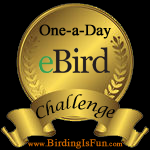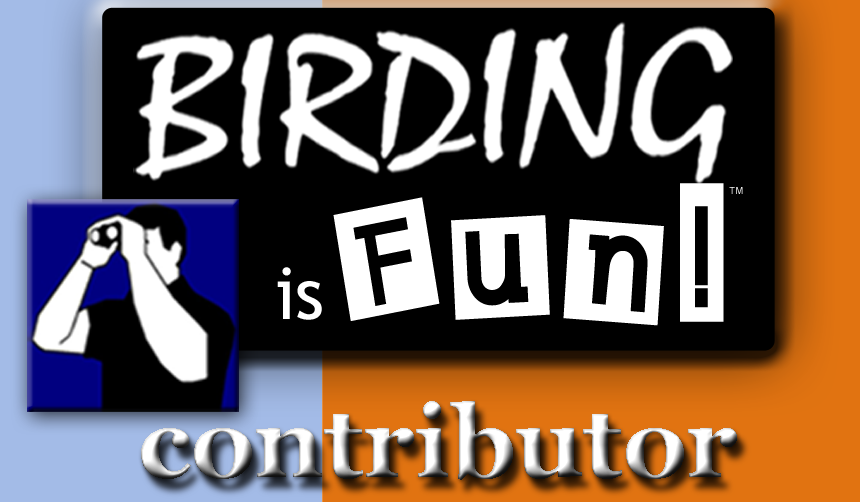With several high profile bird guides being released this year, one deserving new guide may not be getting as much attention as it deserves--the new
National Geographic Guide to the Backyard Birds of North America by Jonathan Alderfer and Paul Hess. Scheduled for release later this week, this attractive guide is a great book to give to those backyard birdwatchers in your life--or any friend or neighbor who might appreciate the birds in their yard.
This 256 page resource is attractively designed and chock-full of useful and interesting information--including two major sections, the first on backyard bird basics (by Paul Hess) and the second larger section (by Jonathan Alderfer) with species accounts for 150 of the most likely birds to be encountered in backyards across the United States and southern Canada. Most of the bird illustrations are from the larger original National Geographic guide, so they will be familiar to long-time birders, but the still do the trick. There are also many additional high-quality photos to round out the visual appeal of this guide.
I really like how this guide provides many ways to approach, identify, and enjoy birds. Each section includes noteworthy features that make it not only beautiful but useful.
Visual Indices: This NGS guide provides six different ways to find and identify birds, beginning with the inside and back covers. The covers fold out to reveal a visual index, showing each of the birds in the guide. This is takes advantage of the key innovation of several brands of laminated pocket guides (such as
Local Guides and
Pocket Guides) that have become popular over the past decade or so, allowing anyone to quickly see and compare many birds in order to find the one that most looks like whatever bird they are watching.
In addition to this visual index, there is a Color Index showing head shots of all the birds included in the guide, organized by overall color. This feature goes back to the original National Audubon Society guides. While this schema doesn't necessarily work as the only way to finding birds (which was a handicap for the original National Audubon Society guides), it may be useful here as four pages of indices, and is a great innovation.
There is also a quick index inside the front cover, allowing people to look up popular birds alphabetically. For those counting, the other ways to find birds quickly in the guide are the table of contents, index, and just flipping through the 150 species accounts.
Species Accounts: I have to admit that when I first looked at the species accounts I was a little put off by the layout. Each species is given its own page (some have up to two pages), with large illustrations from the original National Geographic guide, as well as a large map. The maps are large, well designed, and beautiful. The large size of the maps makes them especially attractive and is exactly what one would hope for from our friends at National Geographic! What put me off initially was the layout of the text into two columns, separated by a line, along with various icons and several different colors and styles of font. On first view the pages look overly busy. But with time, this became less bothersome as I became more aware of how the various icons and font colors organize what is a huge amount of useful and interesting text.

Each species account provides an Identification section, which is very thorough and includes a similar species section--something that is especially useful for beginning birders, and something that is often missing in recent field guides. There is also a section on range, which more than just describes the range shown on the map, butt also includes information on habitat. A food section describes the favorite foods of each species, as well as feeding notes on how to provide these foods in your backyard. Finally, a nesting section summarizes the location and type of nest, as well as number of eggs and information on incubation and fledging--perfect for people curious about the birds they are watching nest in their yard.
Overall these species accounts are well done and will be very useful for people curious about the birds in their backyard. Additional information is provided in sidebars--actually full-page accounts dedicated to special questions or topics of interest, including bird sex, sleeping birds, attracting bluebirds, and how birds stay warm. A section on bird age provides a table including the longest-lived wild birds of sixteen species included in the guide. These mini-essays are great additions that will be very interesting to backyard birders and sure to increase their appreciation of the birds in their yard.
Backyard Basics: While it is easy to focus on the species accounts since they make up the largest portion of the book, it would be criminal to only lightly mention Paul Hess's great initial Backyard Basics section, which includes 34 attractive and useful pages designed to educate and increase people's awareness and enjoyment of birds in their yard. This includes pages with tips on bird feeding, bird housing, landscaping for birds, how to find birds, how to identify birds, and how to connect with birders and additional resources. I was happy to see a nice Citizen Science section introducing readers to projects including the
Christmas Bird Count,
Project Feeder Watch, the
Great Backyard Bird Count, and
eBird. Sidebars include links to other organizations and useful websites.
This whole section is attractively illustrated with photographs and loaded with succinct but useful information. The How to Identify birds section is very basic, just a single page describing eight features or criteria for identifying birds--with another page showing how these features can be used to distinguish between several similar species (Downy vs. Hairy Woodpecker, Gambel's vs. California Quail, and Black-capped vs. Carolina Chickadee). While there is an illustration showing the parts of the bird (inside the back cover), it is very basic so backyard birdwatchers won't be overwhelmed with unusual plumage terms (though there is a glossary included in the back as well so they can learn what a patagium is if they really want to!).
In addition, National Geographic has set up a
backyard birding website where readers of the book can hear the vocalizations of the birds covered in the guide, as well as find more information and help identifying the birds they see in their yard (
Backyard Bird Identifier). So readers of this guide can easily plug into great online resources and the online birding community if they desire.
Final Notes: Overall I found this to be an attractive and well thought out book, and would highly recommend it for backyard birdwatchers. Since it only focuses on backyard birds, it might be a bit frustrating if it is the only bird book owned by someone who also wants to go birding in local parks or wildlife refuges--as soon as they show up at a wetland they won't be able to find any waterbirds in this guide besides Mallards, Canada Goose, Killdeer, and some gulls. So beginning birders who range away from home will need an additional guide. But if you have someone who has feeders in their backyard, this is a great and informative book that they will be sure to enjoy.
Disclaimer: This review is based on a complimentary review copy provided by the publisher.

